1. Landreneau K, Lee K, Landreneau MD. Quality of life in patients undergoing hemodialysis and renal transplantation--a meta-analytic review. Nephrol Nurs J. 2010; 37(1):37–44. PMID:
20333902.
2. Park JI, Baek H, Jung HH. Prevalence of chronic kidney disease in Korea: the Korean National Health and Nutritional Examination Survey 2011–2013. J Korean Med Sci. 2016; 31(6):915–923. PMID:
27247501.
3. Jin DC. Dialysis registries in the world: Korean Dialysis Registry Kidney. Kidney Int Suppl (2011). 2015; 5(1):8–11. PMID:
26097779.
4. Revicki DA, Osoba D, Fairclough D, Barofsky I, Berzon R, Leidy NK, et al. Recommendations on health-related quality of life research to support labeling and promotional claims in the United States. Qual Life Res. 2000; 9(8):887–900. PMID:
11284208.
5. Lowrie EG, Curtin RB, LePain N, Schatell D. Medical outcomes study short form-36: a consistent and powerful predictor of morbidity and mortality in dialysis patients. Am J Kidney Dis. 2003; 41:1286–1292. PMID:
12776282.
6. Joshi VD. Quality of life in end stage renal disease patients. World J Nephrol. 2014; 3(4):308–316. PMID:
25374827.
7. Niechzial M, Hampel E, Grobe T, Nagel E, Dörning H, Raspe H. Determinants of the quality of life in chronic renal failure. Soz Praventivmed. 1997; 42(3):162–174. PMID:
9334088.
8. Mazairac AH, de Wit GA, Grooteman MP, Penne EL, van der Weerd NC, den Hoedt CH, et al. Effect of hemodiafiltration on quality of life over time. Clin J Am Soc Nephrol. 2013; 8(1):82–89. PMID:
23124783.
9. Tel H. Determining quality of life and sleep in hemodialysis patients. Dial Transplant. 2009; 38(6):210–215.
10. The WHOQOL group. The World Health Organization Quality of Life assessment(WHOQOL): development and general psychometric properties. Soc Sci Med. 1998; 46:1569–1585. PMID:
9672396.
11. Min SK, Lee CI, Kim KI, Suh SY, Kim DK. Development of Korean version of WHO quality of life scale abbreviated version (WHOQOL-BREF). J Korean Neuropsychiatr Assoc. 2000; 39(3):571–579.
13. Zigmond AS, Snaith RP. The hospital anxiety and depression scale. Acta Psychiatr Scand. 1983; 67(6):361–370. PMID:
6880820.
14. Zimet GD, Farley GK, Werkman S, Berkoff KA. Psychometric characteristics of the multidimensional scale of perceived social support. J Pers Assess. 1990; 55(3-4):610–617. PMID:
2280326.
15. Julayanont P, Nasreddine ZS, Chertkow H. Montreal cognitive assessment (MoCA): concept and clinical review. In : Larner J, editor. Cognitive Screening Instruments: a Practical Approach. London, United Kingdom: Springer;2013. p. 111–151.
16. Buysse DJ, Monk TH, Berman SR, Kupfer DJ. The Pittsburgh Sleep Quality Index: a new instrument for psychiatric practice and research. Psychiatry Res. 1989; 28(2):193–213. PMID:
2748771.
17. Seng BK, Luo N, Ng WY, Lim J, Chionh HL, Goh J, et al. Validity and reliability of the zarit burden interview in assessing caregiving burden. Ann Acad Med Singapore. 2010; 39(10):758–763. PMID:
21063635.
18. Kowalski J, Tu XM, Jia G, Perlis M, Frank E, Crits-Christoph P, et al. Generalized covariance-adjusted canonical correlation analysis with application to psychiatry. Stat Med. 2003; 22(4):595–610. PMID:
12590416.
19. Tabachnick BG, Fidell LS. Using Multivariate Statistics. 3rd ed. New York, NY: Harper Collins;1996.
20. Cruz MC, Andrade C, Urrutia M, Draibe S, Nogueira-Martins LA, Sesso Rde C. Quality of life in patients with chronic kidney disease. Clinics. 2011; 66(6):991–995. PMID:
21808864.
21. Spiegel BM, Melmed G, Robbins S, Esrailian E. Biomarkers and health-related quality of life in end-stage renal disease: a systematic review. Clin J Am Soc Nephrol. 2008; 3:1759–1768. PMID:
18832106.
22. Soni RK, Weisbord SD, Unruh ML. Health-related quality of life outcomes in chronic kidney disease. Curr Opin Nephrol Hypertens. 2010; 19(2):153–159. PMID:
20051850.
23. Mazairac AH, de Wit GA, Grooteman MP, Penne EL, van der Weerd NC, den Hoedt CH, et al. Clinical performance targets and quality of life in hemodialysis patients. Blood Purif. 2012; 33(1-3):73–79. PMID:
22212621.
24. Saad MM, El Douaihy Y, Boumitri C, Rondla C, Moussaly E, Daoud M, et al. Predictors of quality of life in patients with end-stage renal disease on hemodialysis. Int J Nephrol Renovasc Dis. 2015; 8:119–123. PMID:
26366104.
25. Dogan E, Eryonucu B, Sayarlioglu H, Agargun MY. Relation between depression, some laboratory parameters, and quality of life in hemodialysis patients. Ren Fail. 2005; 27(6):695–699. PMID:
16350820.
26. Cohen SD. Social Support interventions will improve the quality of life of ESRD patients. Semin Dial. 2013; 26(3):262–265. PMID:
23432395.
27. Untas A, Thumma J, Rascle N, Rayner H, Mapes D, Lopes AA, et al. The associations of social support and other psychosocial factors with mortality and quality of life in the dialysis outcomes and practice patterns study. Clin J Am Soc Nephrol. 2011; 6(1):142–152. PMID:
20966121.
28. Cukor D, Cohen SD, Peterson RA, Kimmel PL. Psychosocial aspects of chronic disease: ESRD as a paradigmatic illness. J Am Soc Nephrol. 2007; 18(12):3042–3055. PMID:
18003775.
29. Laudański K, Nowak Z, Niemczyk S. Age-related differences in the quality of life in end-stage renal disease in patients enrolled in hemodialysis or continuous peritoneal dialysis. Med Sci Monit. 2013; 19:378–385. PMID:
23685340.
30. Kutner NG, Brogan DJ. Assisted survival, aging, and rehabilitation needs: comparison of elderly dialysis patients and age-matched peers. Arch Phys Med Rehabil. 1992; 73(4):309–315. PMID:
1554301.
31. Merkus MP, Jager KJ, Dekker FW, de Haan RJ, Boeschoten EW, Krediet RT. Predictors of poor outcome in chronic dialysis patients: the Netherlands Cooperative Study on the Adequacy of Dialysis. Am J Kidney Dis. 2000; 35(1):69–79. PMID:
10620547.
32. Hestin D, Frimat L, Hubert J, Renoult E, Huu TC, Kessler M. Renal transplantation in patients over sixty years of age. Clin Nephrol. 1994; 42(4):232–236. PMID:
7834915.
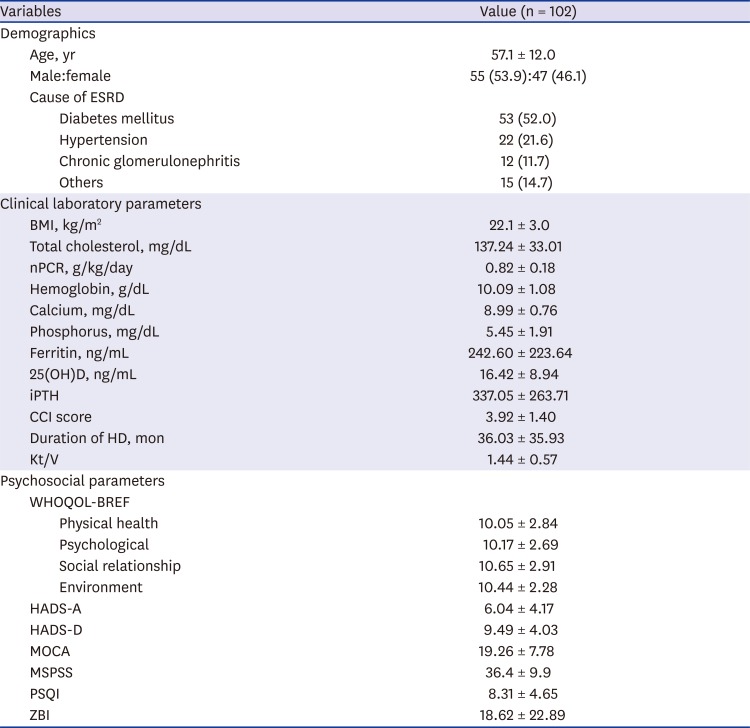
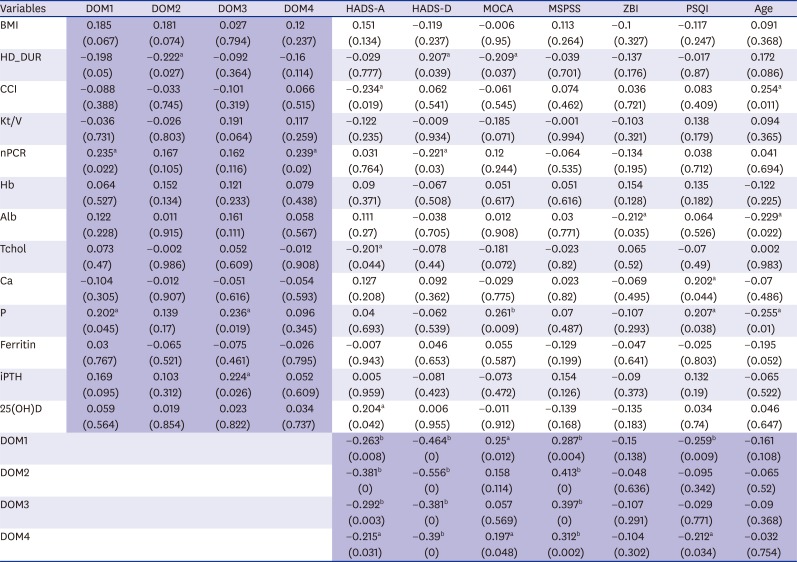

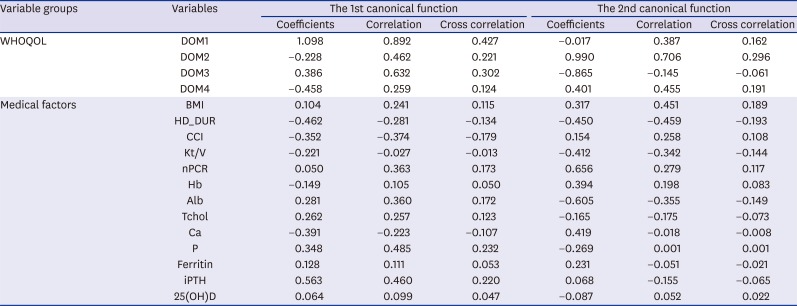

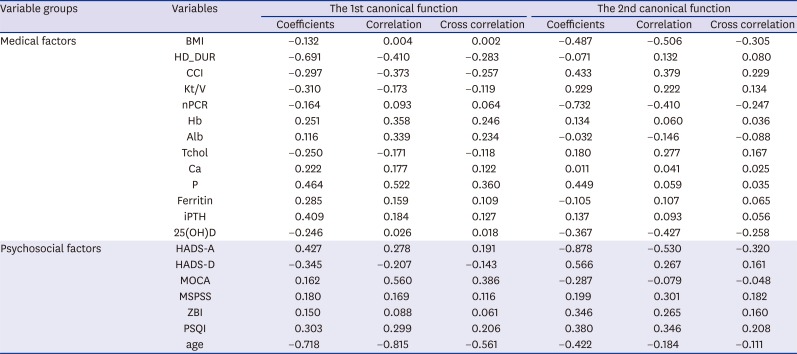




 PDF
PDF Citation
Citation Print
Print



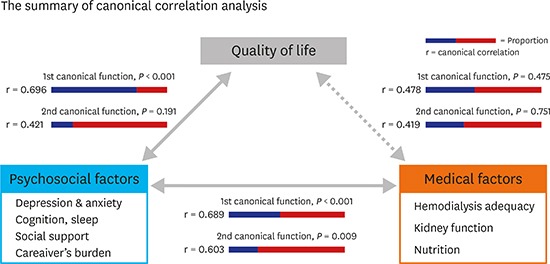
 XML Download
XML Download